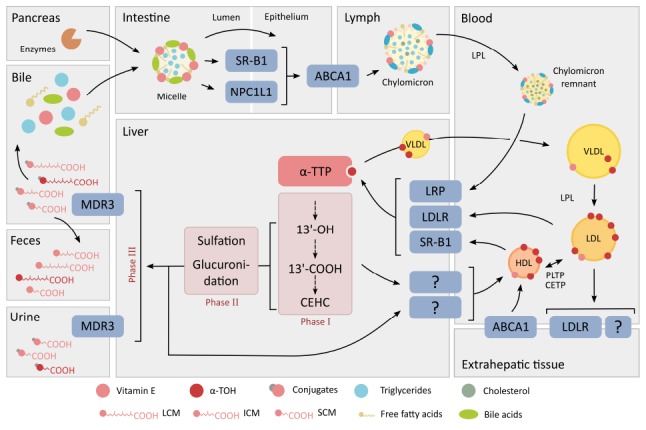Figure 2.

Absorption, transport and metabolism of vitamin E. The route of vitamin E after oral intake follows in general the pathway of other lipids. Pancreatic and intestinal enzymatic digestion followed by the circulation and distribution to the liver and non-hepatic tissues is the same for all vitamin E forms. Discrimination between the different forms of vitamin E in favor of α-TOH occurs mainly in the liver by α-TTP, which protects α-TOH from excessive degradation and excretion. The figure was modified from[43,46,56,60]. SR-B1: Scavenger receptor class B type 1; LPL: Lipoprotein lipase; NPC1L1: Niemann-Pick C1-like 1; VLDL: Very low density lipoproteins; HDL: High density lipoproteins; α-TOH: α-tocopherols; α-TTP: α-TOH transfer protein; LDL: Low density lipoproteins; LRP: LDL receptor-related proteins; LDLR: LDL receptor; 13’-OH: 13’-hydroxychromanol; 13’-COOH: 13’-carboxychromanol; CEHC: Carboxyethylhydroxychromanols; HDL: High density lipoproteins; PLTP: Phospholipid transfer protein; CETP: Cholesteryl ester transfer protein; LCM: Long-chain metabolites; ICM: Intermediate-chain metabolites; SCM: Short-chain metabolites.
